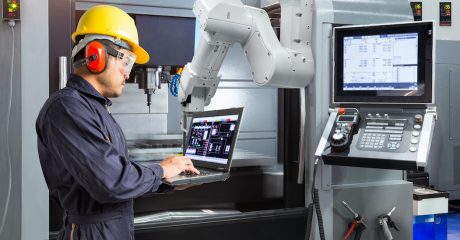Machining and manufacturing are industries that many expected to die out in the U.S. But here we are, alive and thriving. In 2020, the U.S. manufacturing sector will be the ninth largest economy in the world. Experts are predicting growth of five percent a year for the next five years. It won’t be easy and we expect challenges, but we think this decade will be good for our industries. Here’s a look at some of the expected areas of improvement for the next decade.
Production Process Improvements
This next decade will require investments that improve speed responsiveness as well as productivity. Lean manufacturing and quality management will be embraced like never before. Every company will be striving to learn how to do more with less, without sacrificing quality. Expect to spend money on new and/or improved planning and forecasting systems, as well as workforce management systems and performance dashboards.
It’s essential for our industry to become more agile, too. The market is volatile, and we need to be able to quickly respond to changes in customer needs, raw material costs and many other flexible factors. That said, labor costs and regulations, price reduction pressures, transportation costs, overnight delivery style expectations and environmental regulations are all concerns. These fluctuating factors demand a better production process.
Stronger Customer Relationships
The first step in forging stronger relationships is a focus on understanding the needs of potential customers and your market. We will be focusing less on convincing customers they need our products and services and more on providing products and services that they already need. This will drive a shorter product development cycle and desire to create prototypes fast for review.
Connecting with customers using various forms of technology and constantly-evolving social media will become a major focus. Companies will put in the effort up front to make sure they understand customer needs, as this has the biggest impact on product development cycles. They will also create processes that produce faster prototyping. The turn around time to make any changes and have them reviewed again needs to be shortened.
Other enhancements for this area include improved computer aided design and simulation systems. Virtual reality could be a heavy hitter in working out design and function of new products.
Workforce With the Right Skills and Experience
With the expected changes in technology, the push to speed up and improve processes and create better customer relationships by having the right workers is going to be imperative. If you want your company to achieve greatness, you don’t want to hire mediocrity. Companies will be working on attracting highly-skilled talent.
One strategy for attracting top-tier talent includes offering leadership and skills training. Showing potential employees that you want them to grow with you and improve themselves is a great way to attract motivated people. It will also require a good performance management system and process to keep track.
Unemployment rates are low in many areas. The workforce is seeing more and more of the baby boomer generation retiring, taking with them years of experience and expertise. But at the same time, they are also taking with them those higher salaries, additional vacations and extra benefits. What many companies are losing in experience they are gaining in a newer workforce starting out at lower wages. At least many such companies are closing the skills gaps with increased training and leadership programs.
